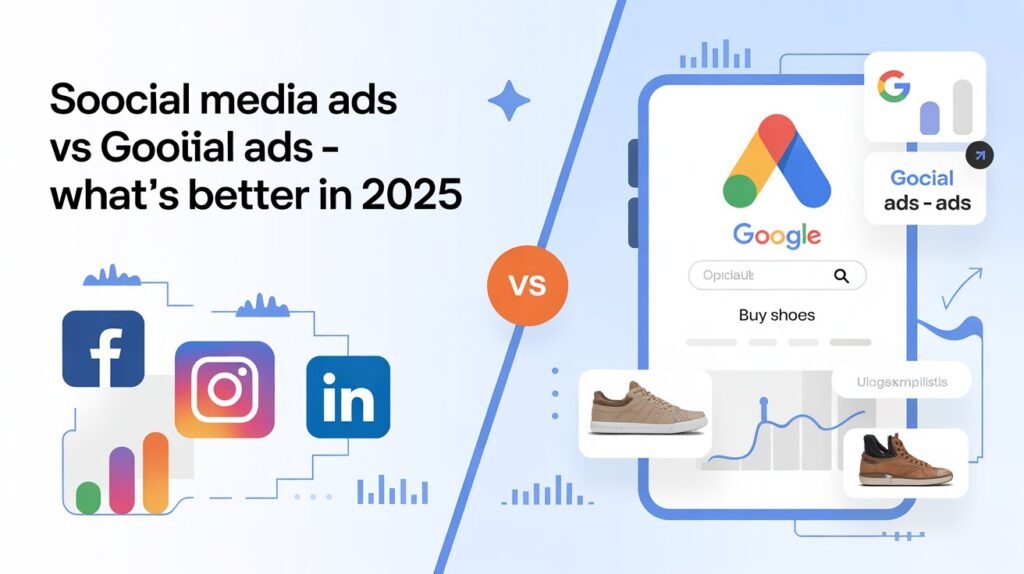📚 Introduction:
In 2025, digital advertising has become more competitive than ever. Small businesses often struggle to choose the right platform between Google Ads and Social Media Ads like Facebook, Instagram, and LinkedIn.
In this blog, we’ll compare social media ads vs Google ads 2025, evaluate their pros and cons, and help you decide which one suits your business needs best.
📊 What Are Google Ads?
Google Ads are search-based ads that appear when someone types a query in Google. These are intent-driven ads—users are already looking for your service or product.
Best for:
- Local services (salon, repair, doctors)
- eCommerce products
- High-intent keywords
📱 What Are Social Media Ads?
Social media ads are interest-based and appear while users scroll on platforms like:
- YouTube
- TikTok (in some regions)
Best for:
- Brand awareness
- Targeting specific interests or behaviors
- Visual storytelling
✅ Pros and Cons Comparison (2025 Update)
| Feature | Google Ads | Social Media Ads |
|---|---|---|
| User Intent | High (searching actively) | Low to medium (passive browsing) |
| Cost per Click (CPC) | High for competitive keywords | Lower CPC for broad targeting |
| Conversion Rate | Higher for service-based businesses | Higher for impulse buys & visuals |
| Ad Format | Text + Display + Shopping | Video, Carousel, Stories, Reels |
| Best Platform For | Direct leads & sales | Brand building & engagement |
| Learning Curve | Steep | Moderate |
| Analytics | Detailed (Google Analytics) | Platform-based insights |
💡 Which Is Better for Small Businesses in 2025?
If your goal is quick leads (plumber, salon, lawyer) → Go with Google Ads.
If your goal is brand awareness, building community, or selling lifestyle products → Choose Social Media Ads (especially Instagram & Facebook).
💬 Pro Tip:
Combine both! Run Google Ads for lead generation and Social Media Ads for remarketing and brand recall.
🔑 Final Verdict
In the battle of social media ads vs Google ads in 2025, there’s no one-size-fits-all solution. The right choice depends on your target audience, budget, and marketing goals.
If you’re just starting out, test both with a small budget and track results using UTM links and analytics.


